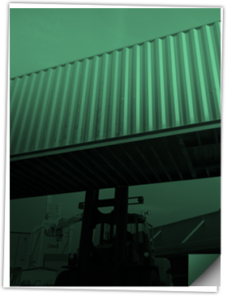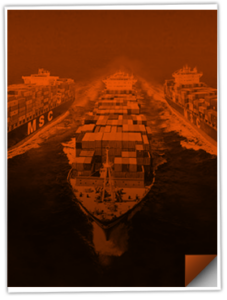Volatile Trucking EnvironmentVolatile Trucking Environment
- February 19, 2018
Domestic Rates are Increasing As Service Levels Decrease
The new ELD mandate, a severe chassis shortage, port congestion due to mega vessels, and an exponentially decreasing pool of drivers have brought the transportation industry to the precipice of a crisis. Now more than ever, shippers need to know how this veritable “perfect storm” of events affects their supply chains, and the ways in which proactive communication and advance forecasting can minimize unpleasant surprises and increased costs.
ELD and Hours of Service
Electronic Logging Device (ELD) regulations that more strictly enforce Hours of Service (HOS) limits have led to reduced free time (usually 1 hour) and an increase in missed deliveries. If shippers are not ready for their appointments, many drivers will cancel due to time constraints rather than face fines for breaking the law and/or falsifying their HOS records. Any detention costs incurred are then charged to the shipper, so every minute counts.
Chassis Shortages, Mega Vessels and Port Congestion
The ongoing chassis shortage, a major cause of port congestion, continues to create problems along the supply chain, with significantly fewer chassis stored at the ports and drayage costs rising. A high level of out-of-service chassis combined with extended free time for Beneficial Cargo Owners (BCOs) only serves to worsen a complex and difficult situation.
If that’s not bad enough, newer mega vessels also contribute to the problem, requiring longer port stay times which force other vessels to wait at anchor, adversely affecting berth productivity and resulting in lengthy delays. The sheer volume of containers introduced into the domestic supply chain with the unloading of each mega vessel serves to further amplify shortages, congestion and delays across the entire supply chain.
Trucker Shortages
As a large segment of truckers reach retirement age, and others leave the industry due to increasing regulatory challenges, the driver market is tightening. The current shortage has led to delivery delays and increased driver pay, which in turn negatively impact shippers’ bottom lines.
The Perfect Storm
In viewing each cause listed above as part of a larger equation, shippers are facing a domestic environment that is rife with equipment and resource stagnation set against a backdrop of significantly increasing volumes and an ever more demanding and knowledgeable consumer base – all of which combine to put further stress on shippers. So, in this equation, ELD/HOS + Chassis Shortage + Port Congestion + Increasing Volumes + Dwindling Trucker Pool + Demanding Consumers = Significant Stress (and Cost!) on Shippers.
Though the future brings hopes and promises of autonomous trucking, block chain technology and enhanced infrastructure, each of which could help shippers regain a stronger foothold in controlling supply chain outcomes and costs, the current state of shortage surrounding the entire domestic supply chain does not bode well for shippers. Despite this, shippers can reclaim a certain degree of control and relief if they are able and willing to entertain an enhanced standard of flexibility in terms of delivery requirements and have an understanding that rates will rise in the near term only to decrease, and stay that way, in the long term as evolutions in compliance and technology lead us toward a more visible, efficient and stable future.
All Hands on Deck
Shapiro anticipates that many of our valued customers, who are not currently furious and frustrated, will be within days of reading this message. It is very easy to blame your broker-forwarder when costs change overnight as service levels decrease. We are hopeful that together we can address current deliveries while designing more sustainable solutions for the future. Please work with us to fight through this “perfect storm.”



